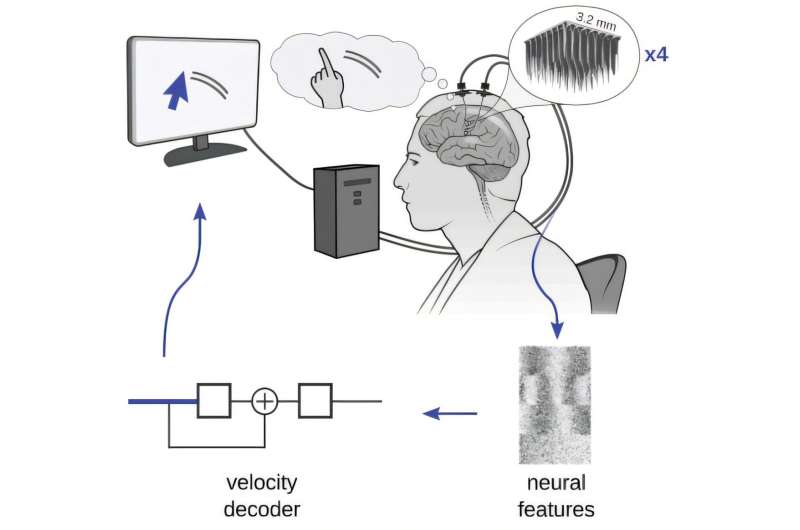Neurological diseases such as stroke or ALS can interrupt the pathway from the brain to the muscles, causing a loss of movement and communication. ALS progressively destroys upper and lower motor neuron pathways, leaving cognition intact but causing paralysis in all four limbs and significant speech impairment.
Brain-computer interfaces are intracortical implanted devices that bypass any disruption by reading neural signals directly from the brain and producing output on the user’s behalf. Many BCIs have relied on neural activity from the dorsal motor cortex, a brain region associated with hand and arm movements. When signals are decoded, users can move a cursor by attempting or imagining limb motion.
In contrast, speech BCIs rely on the ventral precentral gyrus, where neural signals are linked to facial movements and speech articulation. Decoding neural signals from this region enables fast, speech-based communication but has not been shown to support general computer navigation or motion control.

